#riparian woodlands
Text
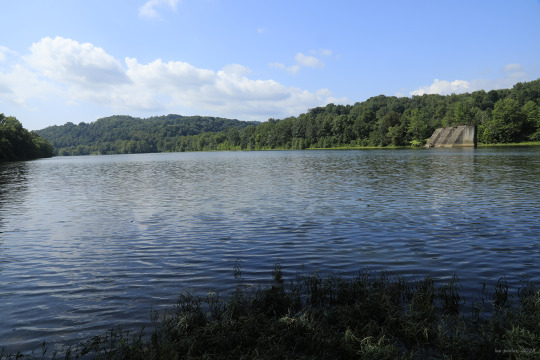
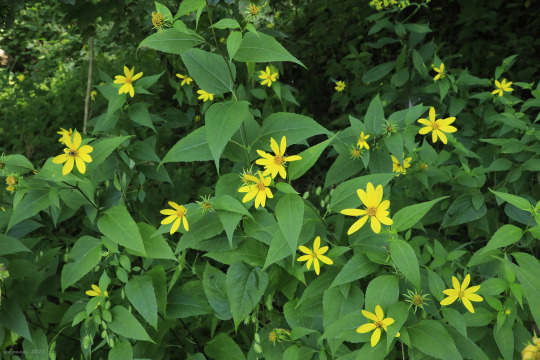

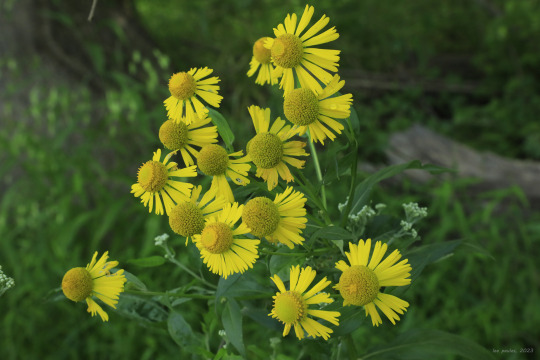
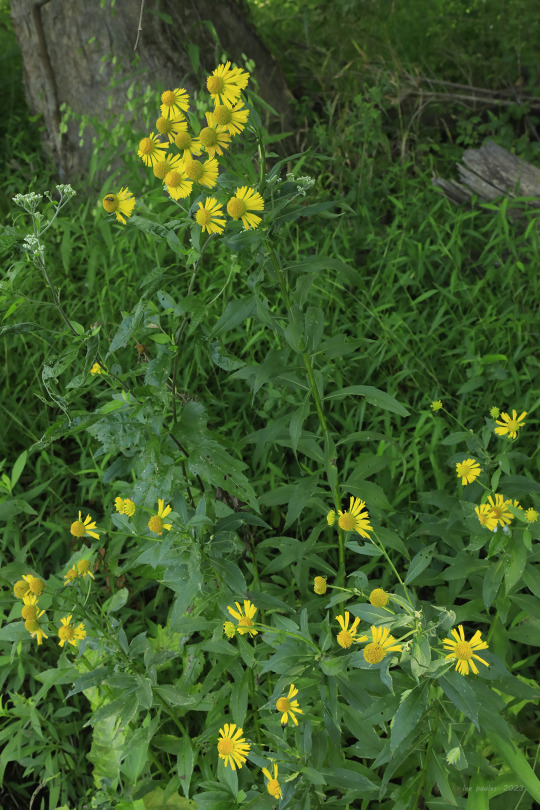

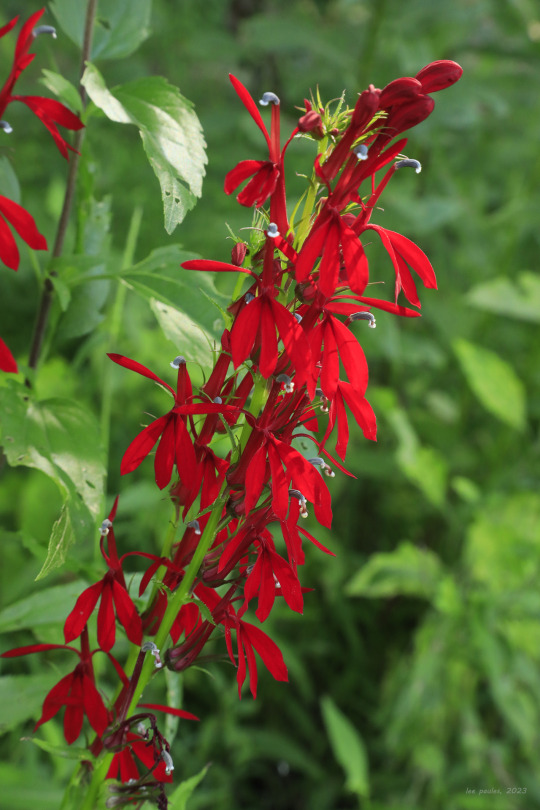

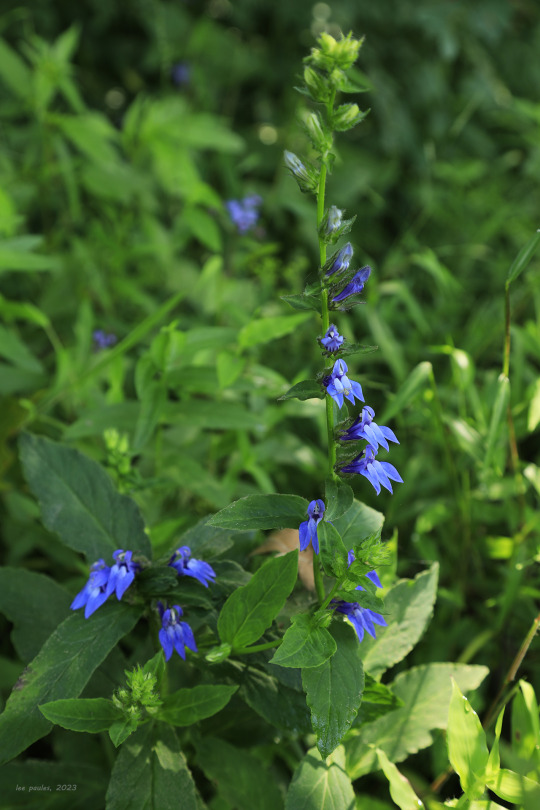

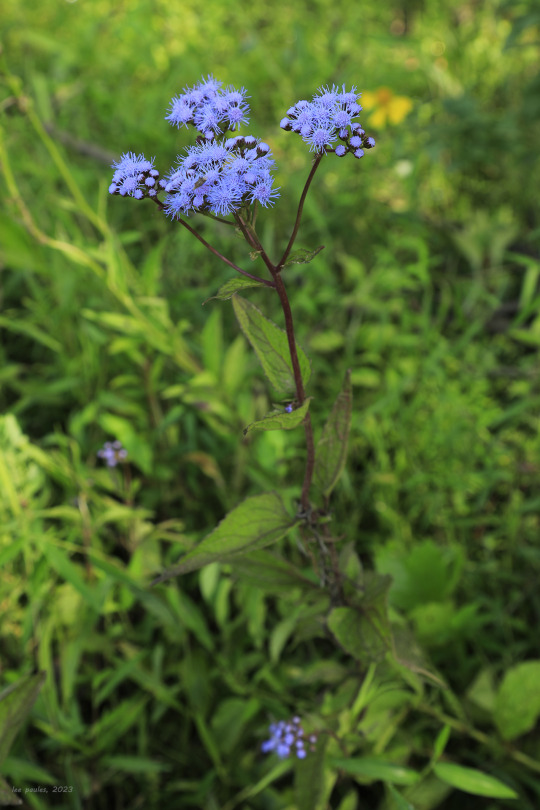
A selection of late summer wildflowers growing in the riparian zone along the Monongahela River at the Friendship Hill National Historic Site.
From top: Paleleaf woodland sunflower (Helianthus strumosus), also known as pale-leaved sunflower, distinguished by long leaf petioles and a pale leaf underside; common sneezeweed (Helenium autumnale), a water-loving aster whose dried leaves were once used to make snuff; cardinal flower (Lobelia cardinalis), whose scarlet, five-lobed flowers draw hummingbirds as pollinators; the closely-related great blue lobelia (Lobelia siphilitica), which early settlers once used as a treatment for syphilis (wishful thinking); and blue mistflower (Conoclinium coelestinum), or wild ageratum, a native aster that has become popular as a garden plant.

As a note, about a dozen sunflowers call NC-WV - SW PA home and they readily hybridize, often complicating identification. Pale-leaved sunflower has a tall, branching structure up to 7 feet in height and dense clusters of large flowers. In addition to long petioles and a pale leaf underside, this sunflower has a smooth stem with a whitish bloom to it. It's a very beautiful mid-to-late summer aster and one of my favorite wildflowers of Central Appalachia.
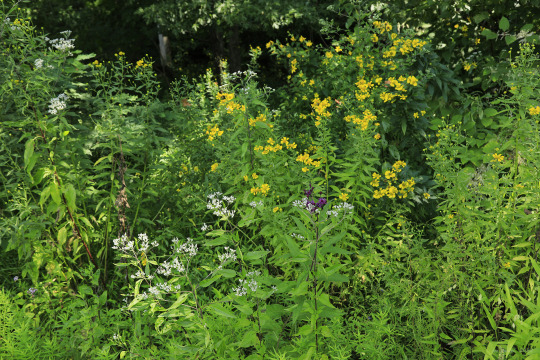
#appalachia#vandalia#wildflowers#flora#summer#pennsylvania#monongahela river#friendship hill national historic site#pale-leaved sunflower#paleleaf woodland sunflower#paleleaf sunflower#common sneezeweed#cardinal flower#great blue lobelia#blue mistflower#mistflower#wild argeratum#riparian
131 notes
·
View notes
Video
Erithacus Rubecula...The Robin by Adam Swaine
Via Flickr:
Due to their long legs and somewhat chubby-looking body, they are a beautiful and much-loved bird. But male Robins in particular can be quite mischievous and confrontational during the breeding season and winter months.We find Robins in woodland, hedgerows, parks and gardens. In some riparian forests they can reach settlement densities of up to 20 pairs per 10 ha. Along with the chaffinch, they are one of the most common birds in our forests. The Robin is a so-called "partial migrant", which means some birds decide to spend the winter in warmer places and the rest will stay in the UK all year round
#RSPB#BTO#passerine bird#passerines#perching#woodland#Peckham Rye Park#London#london parks#wildlife#wild#england#english#english birds#britain#british#british birds#uk#Birds#little birds#garden birds#animals#robin#robin red breast#robins#Robin (Erithacus rubecula)#adult robin (Erithacus rubecula)#woodland robins#Adam Swaine#fuji
13 notes
·
View notes
Text
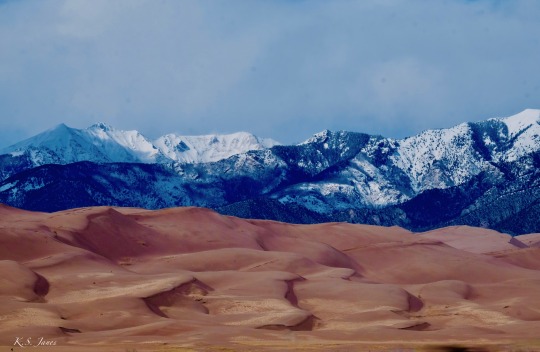
Great Sand Dunes National Park and Preserve is an American national park that conserves an area of large sand dunes up to 750 feet on the eastern edge of the San Luis Valley, and an adjacent national preserve in the Sangre de Cristo Range, in south-central Colorado, The park encompasses 107,342 acres.
The park contains the tallest sand dunes in North America. Sediments from the surrounding mountains filled the valley over geologic time periods. After lakes within the valley receded, exposed sand was blown by the predominant southwest winds toward the Sangre de Cristos, eventually forming the dunefield over an estimated tens of thousands of years. Ecosystems within the mountain watershed include alpine tundra, subalpine forests, montane woodlands, and riparian zones.
139 notes
·
View notes
Text


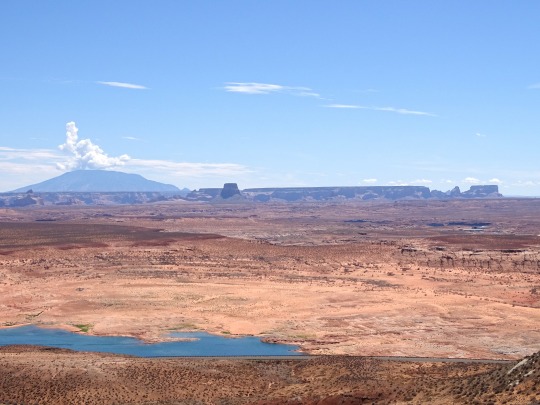




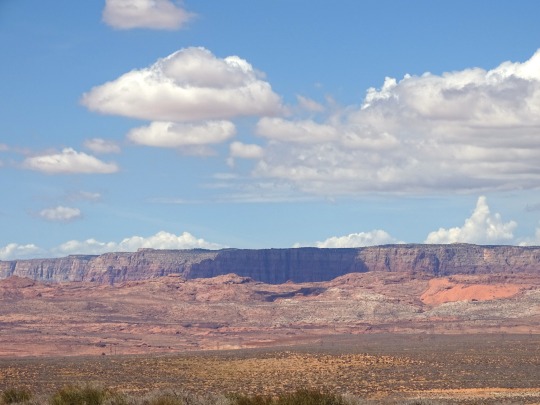
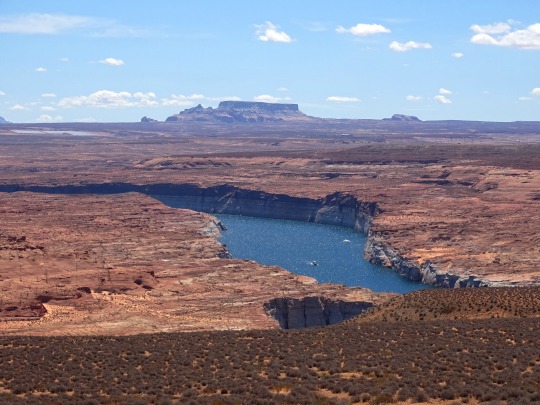

Wahweap Overlook, AZ (No. 4)
Navajo Mountain
On the far horizon, Navajo Mountain looms, a big dome erupting from the canyon landscape - a laccolith, a volcano that never came to be. Reaching an elevation of 10,388 feet (3,166m) above sea level, Navajo Mountain supports several plant life zones: desert scrub, riparian, pinion-juniper woodlands and ponderosa pine forests. It is one of many mountains sacred to the Navajo People.
Tower Butte
Glancing across from left to right many buttes and formations appear. The most prominent on the far right is Tower Butte. Once a part of Romana Mesa, time and the erosive forces of water and weather carved and washed away the materials that connected them. Now this 1600-foot (488m) monolith stands solo and someday it too will crumble and disappear into the landscape.
Source
#Wahweap Overlook#Lake Powell Lookout Point#Glen Canyon National Recreation Area#Glen Canyon NRA#GCNRA#Coconino County#Southwestern USA#Colorado Plateau#desert#flora#nature#blue sky#clouds#grass#travel#original photography#vacation#tourist attraction#landmark#landscape#countryside#USA#Arizona#summer 2022#red rock#Page#Colorado River#detail#close up#Lake Powell
25 notes
·
View notes
Photo
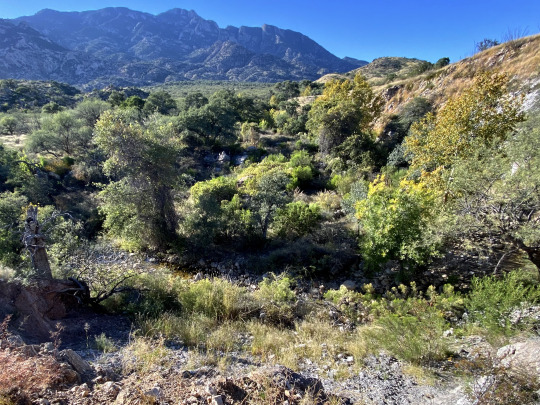
Riparian woodland along Ash Creek at the foot of the Rincon Mountains, Pima County, Arizona.
84 notes
·
View notes
Text
Warbler Showdown; Bracket 2, Poll 9


Black-throated Gray Warbler (Setophaga nigrescens)
IUCN Rating: Least Concern
Range: typically breeds west of the Rockies, from lower British Columbia to the very northern edge of Mexico (mostly there in Baja California). Overwinters in Baja California Sur, as well as the Pacific slope of Mexico, sometimes along the interior of the country as well.
Habitat: found in open coniferous or mixed coniferous-deciduous woodlands with brushy undergrowth, as well as pinyon-juniper and pine-oak; this is true for breeding, migration, and winter habitats.
Northern Parula (Setophaga americana)
IUCN Rating: Least Concern
Range: breeds from southeast Manitoba to southern Quebec, as well as a heavy portion of Mid-Atlantic and Southern States. The extirpation (local extinction) of this species from the middle band of its range (the northern Midwest) is likely due to air pollution decimating the mosses which it uses to build its nest. Overwinters in Florida, heavily in the Caribbean, as well as the Yucatan and southern Mexico.
Habitat: breeds in mature, riparian ('riverside') forests with epiphytic growth. In winter, this bird is the complete opposite, becoming a habitat generalist across areas such as fields, pastures, scrub, dry to wet forests, croplands, and even commercial plantations.
Image Sources: BTYW (Mason Maron); Parula (Mollie Langdon)
#NWW Showdown#black throated gray warbler#northern parula#setophaga#parulidae#animal poll#bird poll#this is literally the setophaga poll and I *still* almost typed 'parula americana'
16 notes
·
View notes
Text
Carolina Chickadee (Poecile carolinensis)
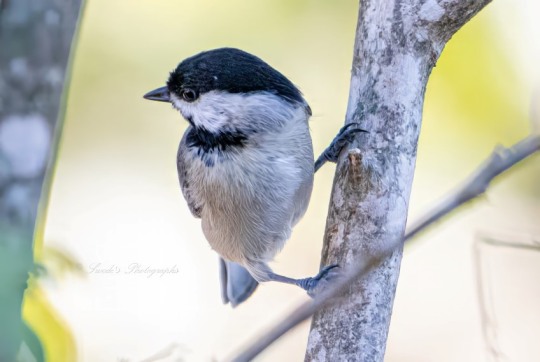
I post a lot of photos of these birds because there are a lot of them around here this year. It's interesting to watch them fly in and out of the forest.
"Carolina Chickadees may be found in deciduous and mixed deciduous-coniferous woodlands, swamps, riparian areas, open woods and parks, and also in suburban and urban areas." - allaboutbirds.org
#photo#photography#photographer#photographylovers#birds#birdwatching#birds of north america#birdsphotography#birdlovers#birdphotography#birdingphotography#birds nature#carolina chickadee#backyard birds#bird#bird photography#bird watching#birding
13 notes
·
View notes
Note
what are the common foods in pitdd and how did they come to be that way? Clothing? Forms of speech or lingo? Architecture?
Well since I tried to stay true to minecraft itself as possible (with some divergence ofc. I find sticking strictly to minecraft game rules for world-building tedious and limiting creativity)
The Dream SMP covers a wide swath of territory with multiple biomes in it. I'll do more food posts later, including general cuisine (since I think there is some food you could get pretty universally from mob drops) but a lot of cuisine varies by climate and geography.
L'manberg was settled in a riparian forest (meaning woodlands surrounding a body of water, in L'manberg's case, it has both access to forested swampland and salt marshes due to it bordering both the sea, and having a river feed into it. The western half of L'manberg is generally easier for living in, the eastern half, also where New L'manberg moved, is worse in so many ways.
Anyways, water chestnuts, cranberries, watercress, spinach, cattails, various types of fish and crustaceans, and waterfowl were local significant food sources that weren't imported (farming wasn't really a big thing anytime in L'manberg due to the geography, they relied a lot on food imports)
Of course there's further west inland, where the community house and greater SMP is, and it's much more suitable for farming land, which had a lot of barley, wheat, and various root vegetables growing.
#thanks for the ask!#the wren calls#pitdd#phantom in the deep dark#pitdd lore#dream smp#dsmp#dsmpblr#worldbuilding#this post will have the other questions answered in reblogs#and i'll probably do a more detailed post for each of those topics#because otherwise holy shit that would be one long post#food#l'manberg#mcyt society headcanons#mcyt worldbuilding#dsmp headcanons
11 notes
·
View notes
Text

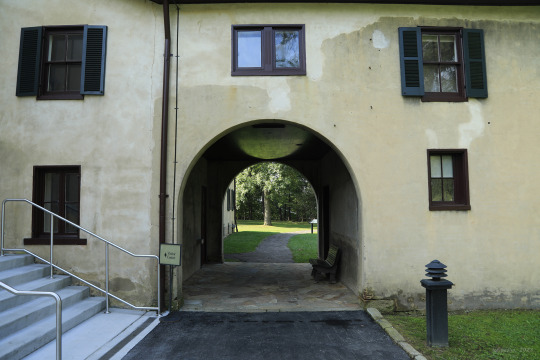
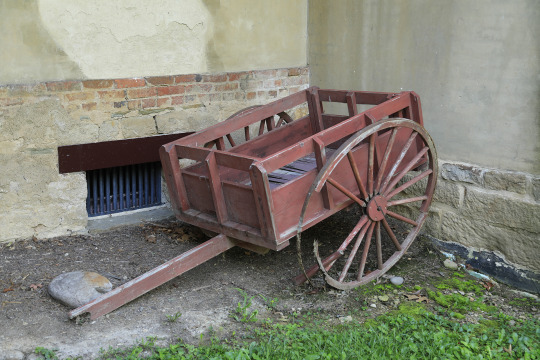


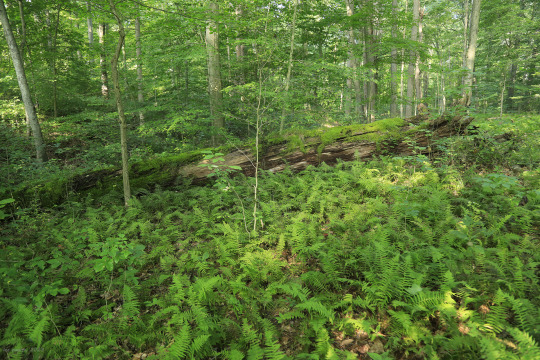

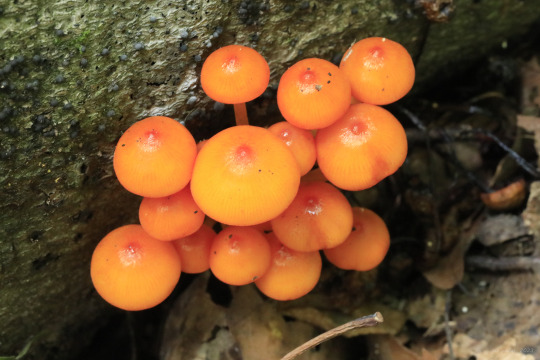
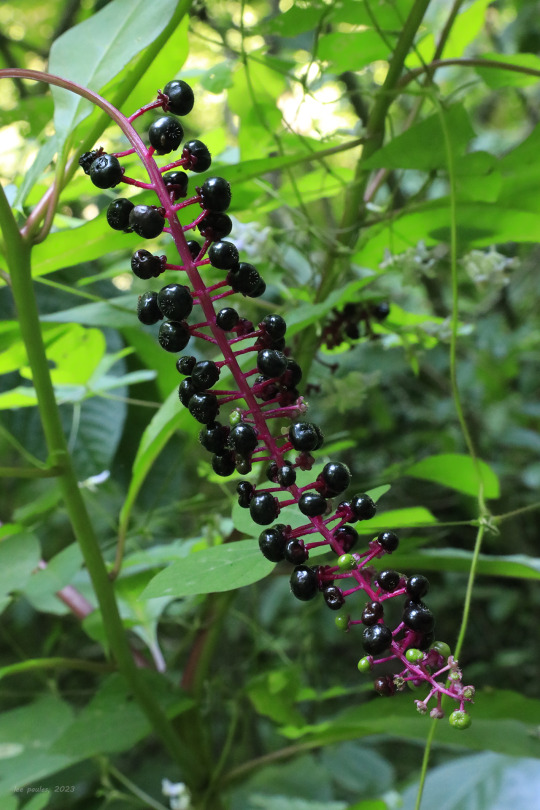
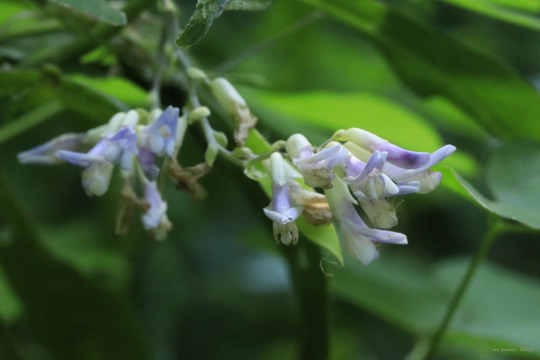

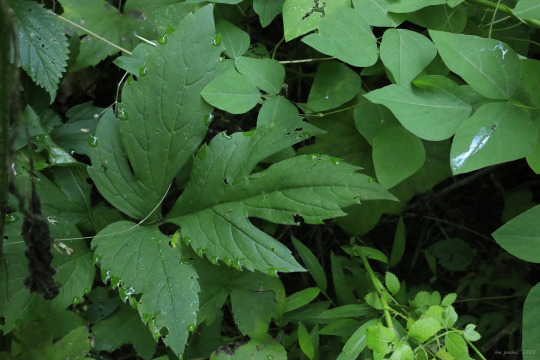
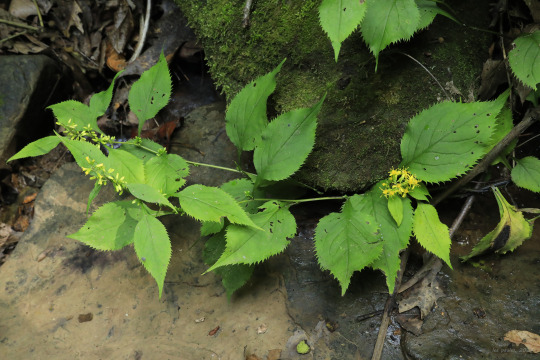
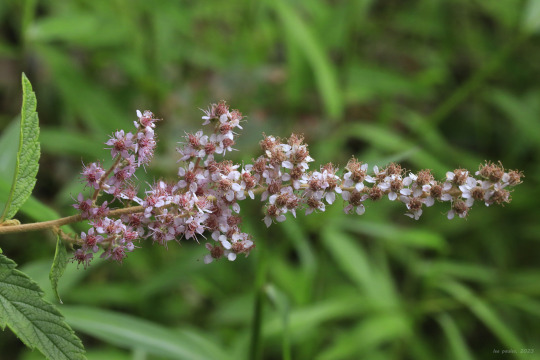
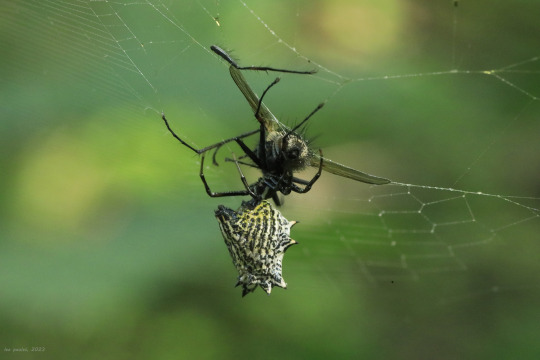

A few photos above from an early morning hike at the Friendship Hill National Historic Site near Pt. Marion, Pennsylvania. If you want to learn more about the history of this sprawling estate, you can go to this link or search for prior posts from the main search page of my Tumblr blog. In addition to the historic homestead of Albert Gallatin, the park features ten miles of hiking trails through verdant oak-hickory and riparian forests. This time of year, the Central Appalachian forest is rich with fungi, legumes, berries, and the loveliest orb-weavers imaginable.
From top: wingstem (Verbesina alternifolia), also known as yellow ironweed, a late summer aster so named because the petioles of its leaves run down the plant's stem; northern spicebush (Lindera benzoin), a gorgeous native shrub whose bright red berries in late summer are followed by the most extraordinary gold foliage in the fall; orange mycena (Mycena leaiana), a lovely, gregarious fungi of deciduous logs whose pigment has shown antibacterial and anti-cancer properties; the ripened but dangerously toxic berries of pokeweed (Phytolacca americana), whose young leaves are used by mountain folk to make poke sallet (but only after repeated cleansings to remove the toxins); American hog-peanut (Amphicarpaea bracteata), a lovely twining vine whose roots and ground nut are edible; cutleaf coneflower (Rudbeckia laciniata), also known as green-headed coneflower and wild goldenglow, a close relative of black-eyed Susan with gorgeous, pinnately-dissected leaves (the leaf photo also shows the characteristic tri-foliate leaf pattern of hog-peanut); zig-zag goldenrod (Solidago flexicaulis), one of two adorable woodland goldenrods that grow in this area (the other being blue-stemmed goldenrod), both of which produce clusters of brilliant yellow flowers in both their leaf axils and at the ends of their stems; steeplebush (Spiraea tomentosa), also known as hardhack, which produces delicate plumes of pink flowers in late summer; a spined micrathena (Micrathena gracilis), which has ensnared a fly in her web; and an arrowhead orb weaver (Verrucosa arenata), also known as a triangle orb-weaver, a sparkling gem of an arachnid that reels in its prey like a fisherman dragging in a net.
#appalachia#vandalia#wildflowers#flora#summer#arachnid#pennsylvania#friendship hill national historic site#fungi#orange mycena#wingstem#yellow ironweed#northern spicebush#pokeweed#american hog-peanut#cutleaf coneflower#green-headed coneflower#wild goldenglow#zig-zag goldenrod#steeplebush#hardhack#orb-weaver#spider#spined micrathena#arrowhead orb-weaver#triangle orb-weaver
23 notes
·
View notes
Photo
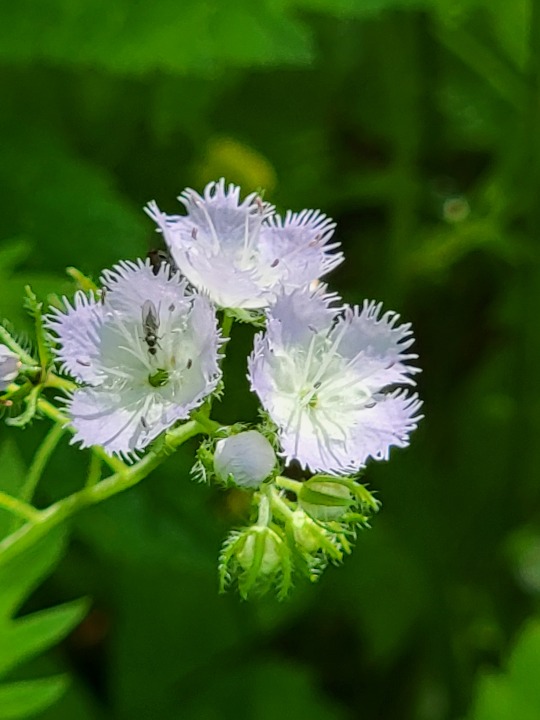
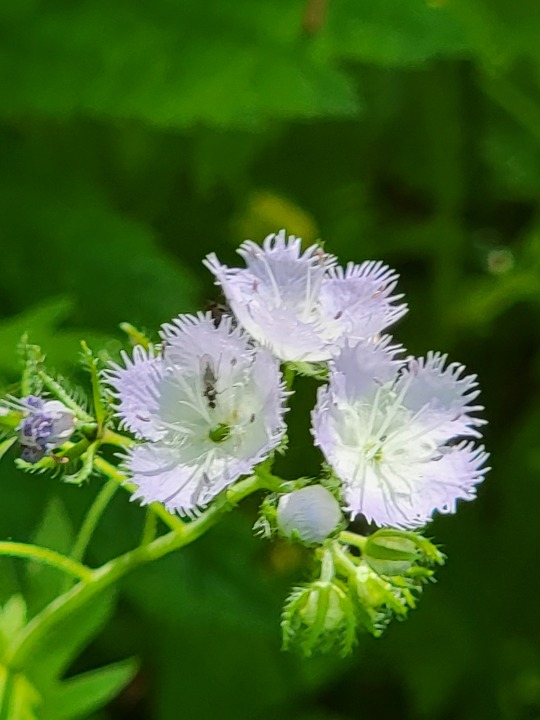

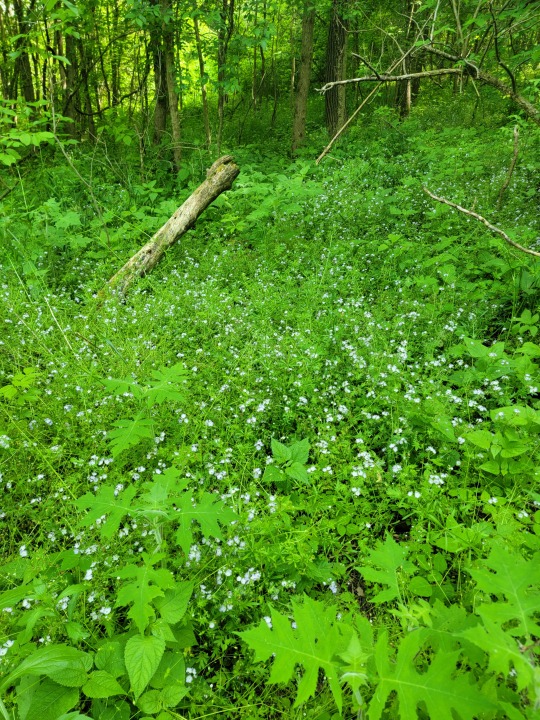
Phacelia purshii
Miami Mist
a vernal annual that inhabits mesic woods and rich riparian woodlands
ILP core.
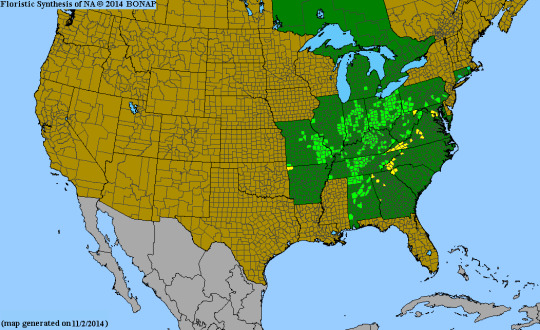
22 notes
·
View notes
Text
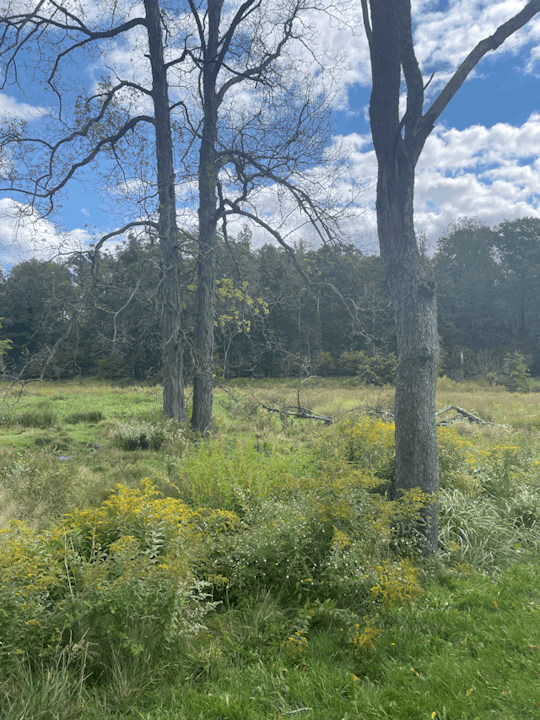

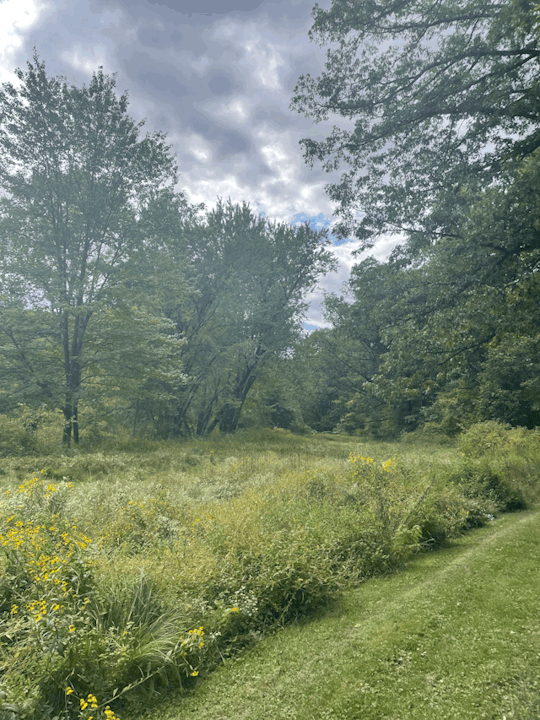

Solidago Gigantea, also known as tall goldenrod is a perennial herb that reaches heights of 6.6 ft tall. It is a widespread species and most typically found in North America, east of the Rocky Mountains. A fun fact is that an herbal tea can be made with the flowers.
Brown Knapweed is a species of herbaceous perennial plants and is typically found in dry meadows and open woodland throughout Europe and North America. It flowers mainly from June to September. A fun fact is that it can grow in disturbed sunny areas, such as road ditches and woodland clearings.
Lance-Leaved Aster is a species of flowering plant native to North America. It can be found in mostly moist and open habitats, such as riparian areas, meadows and ditches. A fun fact is that “aster” in Greek means “star”, and they are a part of the daisy family.
3 notes
·
View notes
Text
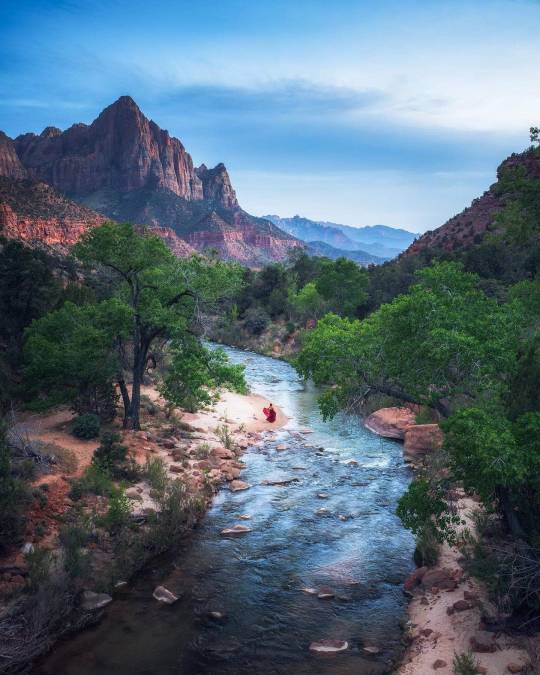
➤ Zion National Park is an American national park located in southwestern Utah near the town of Springdale. A prominent feature of the 229-square-mile (590 km2) park is Zion Canyon, which is 15 miles (24 km) long and up to 2,640 ft (800 m) deep. The canyon walls are reddish and tan-colored Navajo Sandstone eroded by the North Fork of the Virgin River. The lowest point in the park is 3,666 ft (1,117 m) at Coalpits Wash and the highest peak is 8,726 ft (2,660 m) at Horse Ranch Mountain. Located at the junction of the Colorado Plateau, Great Basin, and Mojave Desert regions, the park has a unique geography and a variety of life zones that allow for unusual plant and animal diversity. Numerous plant species as well as 289 species of birds, 75 mammals (including 19 species of bat), and 32 reptiles inhabit the park's four life zones: desert, riparian, woodland, and coniferous forest. Zion National Park includes mountains, canyons, buttes, mesas, monoliths, rivers, slot canyons, and natural arches.
📷@alberthbyang
25 notes
·
View notes
Text

"It is not habitation amid wilderness. Mankind has conquered nature instead of adjusting to it. Often the new instant enclaves have a supermarket, a cleaning and dyeing establishment, and a laundromat. The immigrating mini-city populace consists of country club types rather than hillsiders.
Although Lillard was writing only a decade and a half ago, his mountain frontier is now extinct. "Country club types" have everywhere conquered and now monopolize the picturesque seacoasts and foothills. Despite brave but belated attempts at open space conservation, like those of the Santa Monica Mountains Conservancy, Southern California's remnant natural landscape continues to be destroyed or privatized. As we saw earlier, fire itself accelerates gentrification and the replacement of bohemian lifestyles by snobbery and exclusiveness. The real impetus of this movement to the hills is no longer love of the great outdoors or frontier rusticity, but, as critic Reyner Banham recognized in the 1960s, the search for absolute "thickets of privacy" outside the dense fabric of common citizenship and urban life.
Hillside homebuilding, moreover, has despoiled the natural heritage of the majority for the sake of an affluent few. Instead of protecting "significant ecological areas" as required by law, county planning commissions have historically been the malleable tools of hillside developers. Much of the beautiful coastal sage and canyon riparian ecosystems of the Santa Monica Mountains have been supplanted by castles and "guard-gate prestige." Elsewhere in Southern California-in the Verdugo, Puente, San Jose, San Joaquin, and San Raphael Hills, as well as the Santa Susana, Santa Ana, and San Gabriel Mountains-tens of thousands of acres of oak and walnut woodland have been destroyed by bulldozers to make room for similar posh developments."
Mike Davis, "Ecology of Fear", 1998
2 notes
·
View notes
Text
Wolvden - New Leader Voting
It's the last weekend before Chip retires (I really wish Wolvden let us retire our Leaders at will the last 6 in-game months like on Lioden. Really would help so I'm not trying to set things up when I don't have a ton of time), so I'm doing the leadership vote today!
The Contestants
Looks

Under the Looks category, we have Sasha, who has her father's main marks, just a bit less boldly. Also Ice eyes are love.
Political Stats:
Favorite Biome: Riparian Woodland
August Faction: Independent
(the rest are no opinion and can gain her no points)
Stats
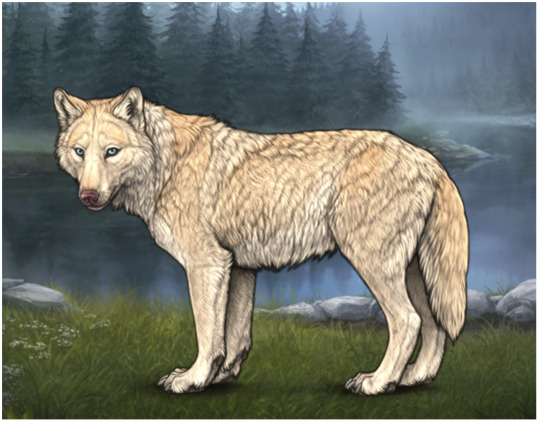
The stats category now means potential stats - the wolf with the highest birth stats. That's Flora right now, who hasn't been in the pack long enough to get any decor.
Political Stats:
Favorite Biome: Desert
Lunar Event Shopping Preference: Markings
(the rest are no opinion and can gain her no points)
Politics:

The final category is the wolf who was on the winning side of votes the most often. That wolf, although a fairly contested position, landed on Poole, the only male wolf in the race.
Political Stats:
Favorite Biome: Rainforest
Lunar Event Shopping Preference: Bases
August Faction: Merged
(the rest are no opinion and can gain him no points)
Voting
The "(+#)" is the number of votes that wolf gets from their rank.
Sasha Votes:
Sasha votes for herself (+2)
Blaze agrees with Riparian Woodland (+2)
Gemm agrees with Independent Faction (+2)
Max agrees with Riparian Woodland (+2)
Redwood agrees with Riparian Woodland (+2)
Hiss agrees with Riparian Woodland (+1)
Rhea agrees with Riparian Woodland (+2)
Milan agrees with Independent Faction (+2)
Sujatha agrees with Riparian Woodland (+2)
Graca agrees with Riparian Woodland (+2)
Constantin agrees with Independent Faction (+2)
Amosis agrees with Riparian Woodland (+2)
Dip agrees with Independent Faction (+2)
Herman agrees with Riparian Woodland (+2)
Sasha Sways:
Prima doesn't agree with anybody and decides to vote Sasha (+2)
Locke doesn't agree with anybody and decides to vote Sasha (+2)
Dale agrees with both Riparian Woodland and Lunar Markings (Flora), and decides to vote for Sasha (+1)
Helena doesn't agree with anybody and decides to vote Sasha (+2)
Gilda agrees with Riparian Woodland and Lunar Bases (Poole), and decides to vote Sasha (+2)
Flora Votes:
Flora votes for herself (+2)
Flora Sways:
Hopper doesn't agree with anybody and decides to vote Flora (+2)
Frostbite doesn't agree with anybody and decides to vote Flora (+1)
Moonglow doesn't agree with anybody and decides to vote Flora (+1)
Poole Votes:
Poole Votes for himself (+2)
Skipper agrees with Merged (+1)
Dawn agrees with Lunar Bases (+2)
Mossback agrees with Merged (+1)
Sylvie agrees with both Lunar Bases and Merged (+2)
Niko agrees with Rainforest (+2)
Beach agrees with Rainforest (+2)
Sir agrees with Merged Faction (+1)
Poole Sways:
Soft doesn't agree with anybody and decides to vote Poole (+1)
Dyla doesn't agree with anybody and decides to vote Poole (+2)
Alis agrees with Merged Faction and Lunar Markings (Flora), and decides to vote Poole (+2)
Totals:
Sasha: 35
Flora: 6
Poole: 18
Sasha is the winner!
And by far. Probably something to do with the fact that Riparian Woodland is the home tile and every wolf has a 1/3 chance of having the home tile be their favorite.
In the future this should be less of a swaying power since the 1/3 chance will be the biome they were born in as shown on their birth info, not the pack as a whole's home tile.
I played around in the Wardrobe and so far this is the plan for her:
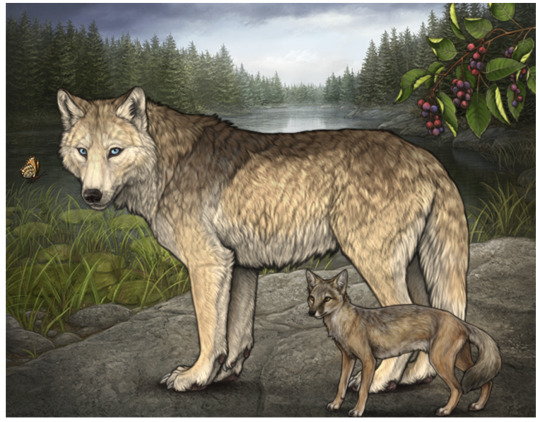
Adding a few more markings to giver her pelt some variety.
Her mate:
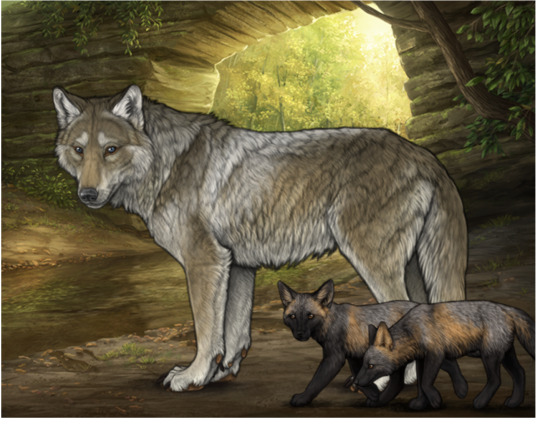
One of the wolves I was hoping to make part of the next generation, as he's the son of a Raffle Wolf!
I don't think I'll be making any changes to him - he's pretty enough as-is.
4 notes
·
View notes
Photo



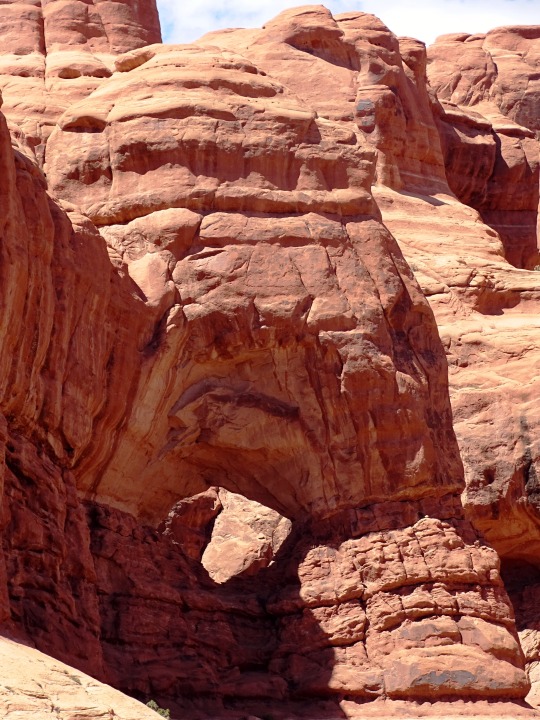
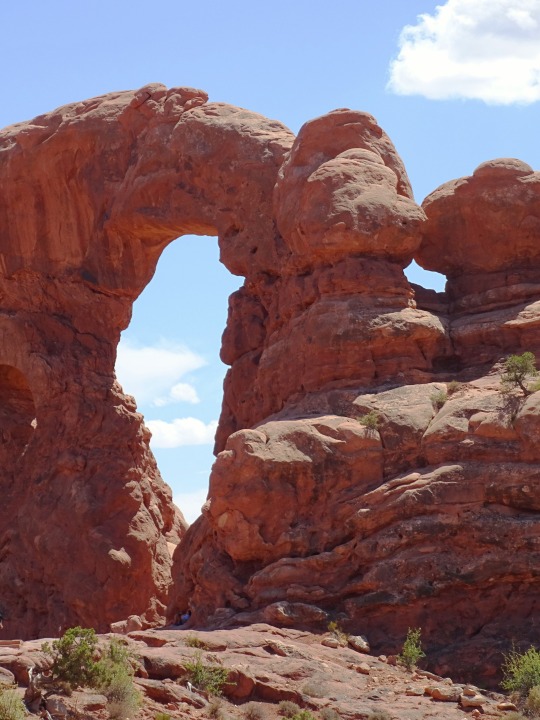

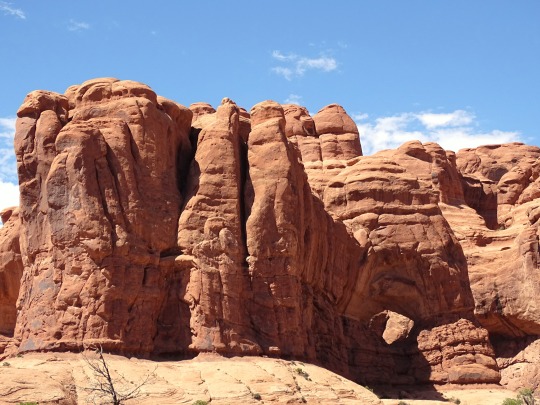

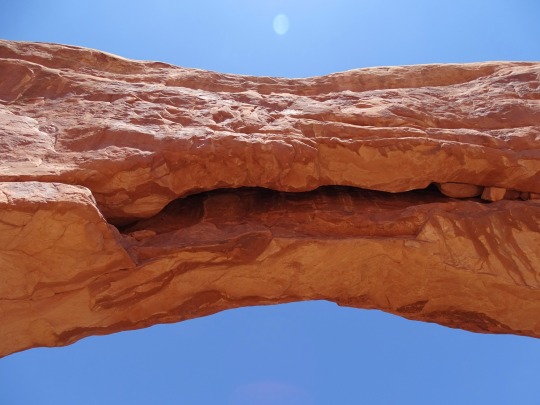
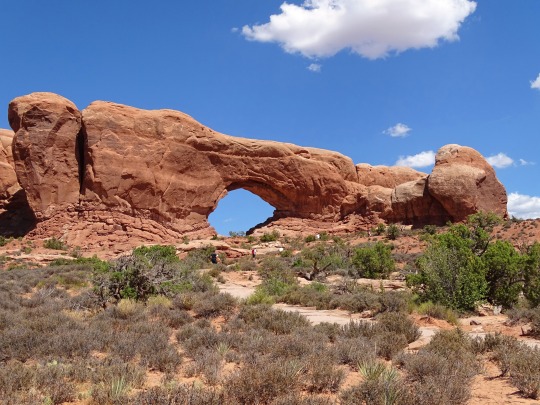
North Window Arch, Arches National Park (No. 7)
Drought resistors are typically perennials. Many have small, spiny leaves that reduce the impact of solar radiation, and some may drop their leaves if water is unavailable. Spines and hairy leaves act to reduce exposure to air currents and solar radiation, limiting the amount of water lost to evaporation. Cacti, yuccas and mosses are examples of drought resistors. Yuccas have extensive taproots that are able to use water beyond the reach of other plants. Moss, a plant not commonly associated with deserts, thrives because it can tolerate complete dehydration: when rains finally return, mosses green up immediately.
Drought evaders, the final group, survive in riparian areas where water is plentiful. Monkey flower, columbine and maidenhair fern are found in well-shaded alcoves near seeps or dripping springs. Cottonwoods and willows require a lot of water, and only grow along river corridors and intermittent streams where their roots can reach the water table easily.
Soil chemistry and depth are also important factors that influence where plants grow. Deep soils tend to be covered with grasses. Shrubs like blackbrush and purple sage favor shallow sandy soil, while greasewood and Mormon tea are signs of alkalinity. The dominant plant community in Arches, the pinyon-juniper woodland, colonizes rocky soils and fractured bedrock.
Non-native plant species can also be found at Arches. Tamarisk lines waterways throughout the Colorado River drainage system with its feathery foliage, and Russian thistle (also known as tumbleweed) lines many trails and roadsides with its distinctive thorns.
Source
#North Window Arch#Turret Arch#Double Arch#Windows Section#vacation#Arches National Park#Grand County#original photography#summer 2023#Western USA#high desert#geology#red rock#rock formation#travel#USA#landscape#countryside#tourist attraction#landmark#grass#flora#Windows Trailhead#bush#nature#Seagull Arch#Utah#Colorado Plateau
4 notes
·
View notes
Photo
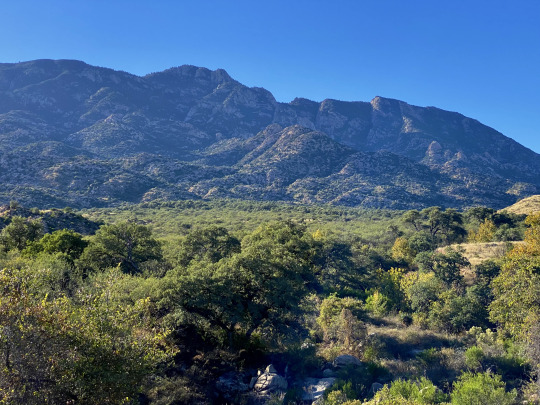
Riparian woodland along Ash Creek at the foot of the Rincon Mountains, Pima County, Arizona.
161 notes
·
View notes
